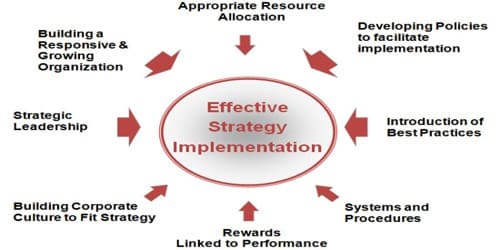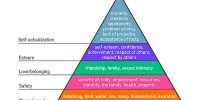Major Interrelated tusks in Strategy Implementing Process
Organizational units need sufficient budgets and resources to carry out their pans of the strategic plan effectively and efficiently. A strategy manager should keep in mind that too little funding slows progress and hamper the ability of organizational units. Strategic plans should be communicated to all employees so that they are aware of the organization’s objectives, mission, and purpose. It refers to the process of choosing the most appropriate course of action for the realization of organizational goals and objectives and thereby achieving the organizational vision.
The strategy-making or strategy-implementing process consists of five interrelated managerial tasks:
(1) Developing a Strategic Vision: Forming a strategic vision of where the organization is headed so as to provide long-term direction, delineate what kind of enterprise the company is trying to become and infuse the organization with a sense of purposeful action. Example: Set the strategy to become the market leader Idler 15 years is the vision of a company.
(2) Setting Objectives: Converting the Strategic vision into Specific performance outcomes for, the company to achieve. Objective setting implies a challenge, establishing performance targets that require stretch and disciplined effort. Example: For being the market leader, the company can –
- Sale, it’s product at a lower price, or
- Can sale better quality product at some price, or
- Adapting newer developed technology, etc.
(3) Craning a Strategy: Crafting a Strategy to achieve the desired outcomes. Strategy-making brings into play the critical managerial issue of how to achieve the targeted results in light of the organization’s situation and prospects.
(4) Implementation and Execution: Implementing and executing the closed Strategy efficiently and effectively. Implementing function consists of seeing what it will take to make the strategy work and to reach the targeted performance on schedule, execute it excellently, and produce good results. Example:
- Making an organization capable of carrying out the strategy.
- Establishing a strategy-supportive policy.
- Motivating the involved people, etc.
(5) Evaluating Performance, Monitoring New Developments, and Initiating Corrective Adjustments: Evaluating performance and initiating corrective adjustment in vision, objectives, long-term Direction, strategy, or execution in light of actual experience, changing conditions, new ideas, and promising opportunities.
















